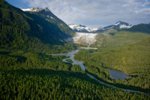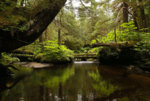Timbo
Chumono
O'reilly's is the only place I know of around here.Where are you buying it from? Do you have the FASTENAL chain of stores in MI? They sell a 25 lb bag for $10.
Looks like there is a Fastenal in Traverse city
Last edited:
O'reilly's is the only place I know of around here.Where are you buying it from? Do you have the FASTENAL chain of stores in MI? They sell a 25 lb bag for $10.
I dunno if it will matter...i would have waited a little bit though.
am curious, how long after initial harvest should I wait to feed it, or at all?.



You can use chemicals for a wolfless tree
The slow change to a "wolfless wonder" went unnoticed in our joy to be rid of the wolves.
Walter Feeds everything heavy straight away. You don't need to wait.
But if you wanted to wait....I'd wait till you see growth.
But why wait?
I would use fish though! Alaska 5-1-1.
I find a lot of scientifical truth about not fertilizing new transplants.
I watched a thing on bears in Alaska once...
Showed how they bring salmon up the banks and eat the brain and eggs and leave the carcass....they did a time lapse on the decaying carcass....
The flick was really convincing....
But....
These are rather convincing as well!
My thing...that's how IT WORKS!
Chemicals....eeeew....just say it!
Take Yellowstone for instance....
Sure it was nice for years without wolves..
The slow change to a "wolfless wonder" went unnoticed in our joy to be rid of the wolves. And Old Faithful remained .....faithful!
But Now with the return of the wolves..
We realize how IT worked!
Fields and fields of flowers again, new river patterns, more wildlife...
Balance!
Anyway....
You can use chemicals for a wolfless tree that IS still beautiful.
Or use Fish, do it how IT WORKS!
And realize magnificence !
See it is Subtle.
Sorce
Problem is, it stinks and draws flies/hornets
I do believe you have finally lost your mind... Step.Away.From.The.Bong
Have you seen these two experiments by Appalachian Bonsai? As a summary it shows that DE has better water retention than Akadama and much better resistance to freeze-thaw cycles.
I was shocked to see how bad both Akadama and Pumice broke down with the freeze-thaw experiment, becoming a paste that impeded drainage.
Makes me think about what Morten Albek said on the ”To Akadama or not to Akadama?” article at Bonsai Empire (https://www.bonsaiempire.com/blog/akadama-soil):
”Not using akadama is because it easily breaks down in freezing periods. Even the harder akadama types are not resistant over longer time spans. Akadama is a clay soil, and will be very compact and poor of oxygen, harming the roots when broken down. After only one or two seasons the akadama will break down and begin decreasing its value is the experience I have. Trees imported from Japan growing in akadama soil have all proven very big problems surviving. The Japanese climate, and their lacking availability of other soil types makes akadama their choice. The humid Japanese climate during summer and frequent repotting of trees, practically makes akadama a favorite choice of Bonsai soil there (also economically compared to importing soils). So if you live in an area comparable to the Japanese climate akadama might be your choice, or maybe you find another source better suited (both practically and economically).”Being in Canada and after seeing the videos above makes me think whether Akadama is really a good option here. I do have access to it. And, although it is certainly more expensive than most soil types, it is feasible for me. The real question is: Is it right for me?
On a slightly different note, I was very intrigued with Coconut Coir not breaking down and keeping drainage, as well as being water retentive. Everywhere I look says to stay clear of it. It certainly has problems (high K and Na content for instance), but these can be mitigated. Any thoughts there?
Also, how about these Growstones?Seems like it could replace Pumice?
Cheers.
I noticed that after I bought it, and was kind of bummed. On the bright side, it held up really well to repeated freeze thaw cycles.When Optisorb is wet, you can smash it between your fingers like clay
I noticed that after I bought it, and was kind of bummed. On the bright side, it held up really well to repeated freeze thaw cycles.
I did do a roughly 50/50 lavaI think Optisorb is okay for 1 year I would not use it alone however as the soil structure will break down. I would use pumice or lava with it.
Have you seen these two experiments by Appalachian Bonsai? As a summary it shows that DE has better water retention than Akadama and much better resistance to freeze-thaw cycles.
I was shocked to see how bad both Akadama and Pumice broke down with the freeze-thaw experiment, becoming a paste that impeded drainage.
Makes me think about what Morten Albek said on the ”To Akadama or not to Akadama?” article at Bonsai Empire (https://www.bonsaiempire.com/blog/akadama-soil):
”Not using akadama is because it easily breaks down in freezing periods. Even the harder akadama types are not resistant over longer time spans. Akadama is a clay soil, and will be very compact and poor of oxygen, harming the roots when broken down. After only one or two seasons the akadama will break down and begin decreasing its value is the experience I have. Trees imported from Japan growing in akadama soil have all proven very big problems surviving. The Japanese climate, and their lacking availability of other soil types makes akadama their choice. The humid Japanese climate during summer and frequent repotting of trees, practically makes akadama a favorite choice of Bonsai soil there (also economically compared to importing soils). So if you live in an area comparable to the Japanese climate akadama might be your choice, or maybe you find another source better suited (both practically and economically).”Being in Canada and after seeing the videos above makes me think whether Akadama is really a good option here. I do have access to it. And, although it is certainly more expensive than most soil types, it is feasible for me. The real question is: Is it right for me?
On a slightly different note, I was very intrigued with Coconut Coir not breaking down and keeping drainage, as well as being water retentive. Everywhere I look says to stay clear of it. It certainly has problems (high K and Na content for instance), but these can be mitigated. Any thoughts there?
Also, how about these Growstones?Seems like it could replace Pumice?
Cheers.
I feel like that freeze-thaw cycle test has some flaws in it's reasoning. Unless you live in areas where you drop down to -110F at night and go back above freezing during the day, it's assuming way more severe conditions than what people live in. Temp changes are also a lot more gradual than that test allows for. All of these elements would play a major factor in how soils hold up. As a comparison of components to one another, it's useful to know what is more durable. But conclusions outside that don't really hold weight imo.
